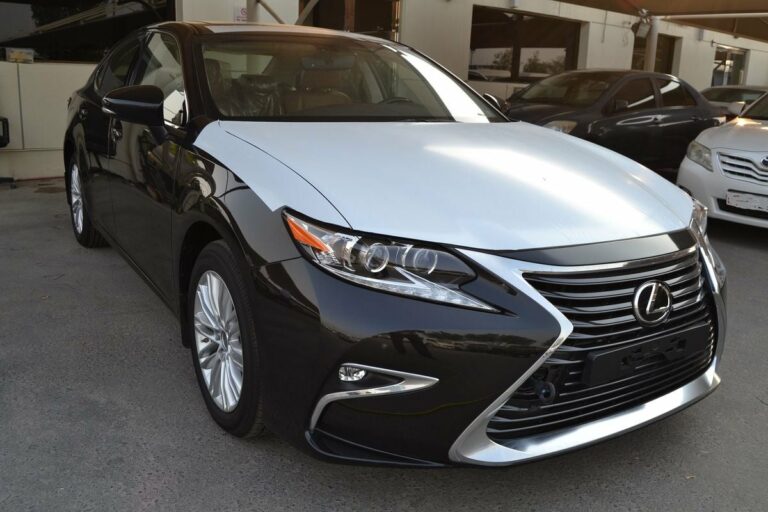Low Maintenance Car Brands In India: Your Guide to Hassle-Free Ownership
Low Maintenance Car Brands In India: Your Guide to Hassle-Free Ownership cars.truckstrend.com
In a country where every rupee counts and daily commutes can be demanding, owning a car that doesn’t burn a hole in your pocket for repairs and servicing is a dream for many. A "low maintenance car" isn’t just about the initial purchase price; it encompasses a vehicle that is reliable, fuel-efficient, has readily available and affordable spare parts, and boasts a widespread and efficient service network. For Indian consumers, where long-term ownership is common and road conditions can be challenging, choosing a low maintenance car brand translates directly into peace of mind, significant savings, and a more convenient ownership experience. This comprehensive guide will delve into what makes a car low maintenance and highlight the top brands in India that consistently deliver on this crucial promise.
What Makes a Car Low Maintenance? Understanding the Key Factors
Low Maintenance Car Brands In India: Your Guide to Hassle-Free Ownership
The term "low maintenance" isn’t merely a marketing gimmick; it’s a combination of several critical factors that contribute to a vehicle’s overall cost of ownership beyond the showroom price. Understanding these elements is crucial for making an informed decision:
- Reliability and Durability: A truly low maintenance car is one that rarely breaks down. This stems from robust engineering, quality components, and proven technology that can withstand diverse driving conditions, including India’s often challenging roads and traffic. Fewer breakdowns mean fewer unexpected repair bills and less time spent at the service center.
- Affordable Spare Parts: Even the most reliable cars need parts replaced over time due to wear and tear. The cost of these spare parts significantly impacts maintenance expenses. Brands that manufacture or source parts locally, or have high production volumes, can offer more competitive pricing.
- Widespread Service Network: Access to authorized service centers, especially in tier-2 and tier-3 cities, is paramount. A vast network ensures that servicing and repairs are convenient, reduce towing costs, and provide access to trained technicians who understand the specific vehicle models.
- Fuel Efficiency: While not strictly "maintenance," fuel costs are the largest recurring expense for any car owner. Vehicles with good mileage directly reduce the overall cost of ownership, making them inherently more economical.
- Simplicity of Design and Technology: Highly complex systems, while offering advanced features, can be expensive to diagnose and repair. Cars with simpler, proven mechanical designs often translate to lower labor costs during servicing.
- High Resale Value: A car that holds its value well indicates reliability and desirability in the used car market, reflecting consumer confidence in its long-term performance and low running costs.

Top Low Maintenance Car Brands in India: A Deep Dive
Several automotive brands have carved a niche for themselves in the Indian market by consistently offering vehicles that are easy on the pocket in the long run. Here’s a closer look at the leaders in this segment:
1. Maruti Suzuki
Undisputedly the king of the Indian automotive market, Maruti Suzuki’s dominance is largely built on its reputation for low maintenance and high reliability. With a market share consistently above 40%, Maruti Suzuki benefits from an unparalleled service network stretching to the remotest corners of the country. Their parts are not only affordable but also widely available, ensuring quick and inexpensive repairs. Maruti’s engines are known for their simplicity and robustness, contributing to their excellent fuel efficiency and longevity. The high resale value of Maruti cars further solidifies their low-ownership cost proposition.

Popular Low Maintenance Models: Alto K10, WagonR, Swift, Baleno, Dzire, Ertiga.
2. Hyundai
Hyundai has successfully positioned itself as a strong contender to Maruti Suzuki, offering a blend of premium features, stylish designs, and competitive maintenance costs. Over the years, Hyundai has significantly expanded its service network and localized parts production, making its vehicles increasingly affordable to maintain. Their engines are refined and reliable, offering a good balance of performance and fuel efficiency. Hyundai’s focus on quality and customer satisfaction has earned them a loyal customer base who appreciate the hassle-free ownership experience.
Popular Low Maintenance Models: Grand i10 Nios, Aura, Creta, Venue, i20.
3. Tata Motors

Tata Motors has undergone a significant transformation, with its new generation of vehicles setting benchmarks in safety, design, and features. Crucially, they have also made strides in improving their service network and ensuring competitive spare part pricing. Tata cars are known for their robust build quality, designed to withstand Indian road conditions. The company’s push for localization and efficient after-sales service has made Tata vehicles a strong contender in the low maintenance segment, particularly with their popular sub-compact and compact SUV offerings.
Popular Low Maintenance Models: Tiago, Punch, Nexon, Altroz.
4. Honda
Honda cars, while sometimes perceived as slightly more premium than Maruti or Hyundai, are renowned for their exceptional engine reliability and smooth performance. Their engines are engineered for longevity and require minimal unscheduled maintenance. While some specific parts might be marginally more expensive, the infrequency of replacements often balances out the cost. Honda’s service network, though not as widespread as Maruti’s, is known for its quality and professionalism, ensuring a dependable ownership experience.
Popular Low Maintenance Models: Amaze, City.
5. Toyota
Toyota has a global reputation for bulletproof reliability, and this holds true in India as well. Though their independent models might have a higher initial purchase price, the long-term ownership costs are remarkably low due to the sheer durability of their components and very low instances of breakdowns. Toyota’s service quality is exemplary, and while parts might be pricier than some rivals, their longevity means less frequent replacement, ultimately saving money. Their collaboration with Maruti Suzuki (e.g., Glanza, Hyryder) has also introduced more affordable models with Toyota’s reliability DNA.
Popular Low Maintenance Models: Glanza, Urban Cruiser Hyryder, Innova Crysta, Fortuner.
Benefits of Owning a Low Maintenance Car
The advantages of choosing a low maintenance car extend far beyond just saving money on service bills:
- Significant Cost Savings: Direct savings on spare parts, labor, and fewer unscheduled repairs. Reduced fuel consumption further lowers running costs.
- Peace of Mind: Less worry about unexpected breakdowns or hefty repair bills, allowing for a more enjoyable driving experience.
- Higher Resale Value: Vehicles known for reliability and low running costs command better prices in the used car market.
- Convenience: Less time spent at service centers, fewer trips for repairs, and quick availability of parts.
- Reduced Stress: Knowing your vehicle is dependable minimizes the stress associated with car ownership.
Key Considerations Before Buying a Low Maintenance Car
While focusing on brands is a good starting point, here are crucial considerations before making your purchase:
- Specific Model’s Track Record: Even within a low-maintenance brand, individual models can vary. Research specific models for common issues, user reviews, and long-term ownership reports.
- Your Driving Habits: High mileage drivers will benefit even more from fuel-efficient and durable cars. City drivers might prioritize ease of maneuverability and low clutch/brake wear.
- Local Service Network: Ensure the brand has a well-regarded service center conveniently located near your home or workplace.
- Features vs. Complexity: Sometimes, advanced features or complex technologies can lead to higher maintenance costs down the line. Balance your need for features with potential long-term expenses.
- Insurance Costs: Research insurance premiums for the models you’re considering, as parts cost and repair complexity can influence these.
Tips for Further Reducing Car Maintenance Costs
Even with a low maintenance car, smart ownership practices can further slash your expenses:
- Adhere to Service Schedules: Follow the manufacturer’s recommended service intervals diligently. Regular maintenance prevents minor issues from escalating into major, expensive problems.
- Practice Smooth Driving: Aggressive acceleration, hard braking, and fast cornering increase wear and tear on tires, brakes, suspension, and engine components. Drive smoothly to extend component life.
- Monitor Tire Pressure: Properly inflated tires improve fuel efficiency and extend tire life, saving money on both fronts.
- Regular Fluid Checks: Periodically check engine oil, coolant, brake fluid, and power steering fluid levels. Low fluid levels can cause significant damage.
- Use Genuine Spare Parts: Always insist on genuine OEM (Original Equipment Manufacturer) parts. While aftermarket parts might be cheaper, their quality can be inconsistent, leading to premature failure and more expenses.
- Avoid Unnecessary Modifications: Aftermarket modifications, especially to the engine or electrical systems, can sometimes void warranties and lead to unforeseen maintenance issues.
- Basic DIY Checks: Learn how to perform simple checks like inspecting lights, wipers, and fluid levels. This can help catch minor issues before they become major.
Challenges and Solutions in Low Maintenance Car Ownership
While low maintenance brands offer many advantages, challenges can still arise:
- Challenge: Counterfeit Parts: The market is sometimes flooded with fake spare parts.
- Solution: Always get servicing done at authorized service centers or reputable independent garages that guarantee genuine parts. Insist on seeing the packaging.
- Challenge: Rising Labor Costs: Even with affordable parts, labor charges can add up.
- Solution: Compare service packages offered by dealerships. Consider annual maintenance contracts (AMCs) if available, which can offer predictable costs.
- Challenge: Over-reliance on Brand Reputation: Assuming all models from a low-maintenance brand are equally trouble-free.
- Solution: Research specific models thoroughly, checking online forums, owner reviews, and expert long-term tests.
Low Maintenance Car Brands in India: At a Glance
Here’s a summary of popular models from low maintenance brands, providing an estimated range for their typical annual maintenance costs and general ex-showroom prices. Please note that these figures are indicative and can vary based on model variant, driving conditions, service center, and specific repairs needed.
| Brand | Popular Low-Maintenance Models | Ex-showroom Price Range (INR Lakhs) | Estimated Annual Maintenance Cost (INR) | Key Low-Maintenance Factors |
|---|---|---|---|---|
| Maruti Suzuki | Alto K10, WagonR, Swift, Baleno, Dzire | 3.99 – 9.50 | 4,000 – 8,000 | Unrivalled service network, cheapest parts, high reliability, excellent resale value. |
| Hyundai | Grand i10 Nios, Aura, i20, Venue, Creta | 5.90 – 19.90 | 5,000 – 10,000 | Extensive service network, competitive parts, refined engines, good build quality. |
| Tata Motors | Tiago, Punch, Nexon, Altroz | 5.60 – 15.00 | 5,500 – 11,000 | Robust build, improving service, affordable parts, strong safety ratings. |
| Honda | Amaze, City | 7.20 – 15.80 | 6,000 – 12,000 | Highly reliable engines, durable components, good service quality, infrequent repairs. |
| Toyota | Glanza, Urban Cruiser Hyryder, Innova Crysta (older) | 6.80 – 19.90 | 5,000 – 10,000 | Legendary reliability, long-lasting parts (though slightly higher priced), excellent service. |
Note: Prices are ex-showroom and subject to change. Maintenance costs are estimates for routine servicing and minor wear & tear, excluding major repairs or accident damage.
Frequently Asked Questions (FAQ) about Low Maintenance Cars
Q1: Are diesel cars more expensive to maintain than petrol cars?
A1: Generally, yes. Diesel engines, especially modern ones with complex emission systems, can have higher service costs due to more expensive parts (e.g., fuel injectors, DPF) and specific maintenance requirements. However, they often offer better fuel efficiency for high mileage users.
Q2: How often should I service my car to keep maintenance low?
A2: Always follow the manufacturer’s recommended service schedule, which is typically every 6 months or 10,000 km, whichever comes first. Regular servicing is key to preventing major issues.
Q3: Does driving style really affect maintenance costs?
A3: Absolutely. Aggressive driving (hard acceleration, braking, high speeds) puts more stress on the engine, brakes, tires, and suspension, leading to faster wear and tear and higher replacement costs. Smooth, anticipatory driving extends component life.
Q4: Is it cheaper to get my car serviced at an independent garage than a dealership?
A4: Often, independent garages might charge less for labor. However, dealerships offer specialized tools, genuine parts, and technicians trained specifically on your car’s brand. For major repairs or warranty-covered work, dealerships are usually recommended. For routine service, a trusted independent garage can be cost-effective.
Q5: What’s the biggest unexpected cost in car ownership?
A5: Major component failures (engine, transmission) or accident repairs are typically the biggest unexpected costs. Choosing a reliable, low-maintenance brand and driving safely can significantly reduce these risks.
Conclusion
Choosing a low maintenance car brand in India is a wise decision that pays dividends throughout your ownership period. Brands like Maruti Suzuki, Hyundai, Tata Motors, Honda, and Toyota have consistently proven their mettle in offering vehicles that are not only reliable and efficient but also economical to run and maintain. By understanding the factors that define a low maintenance vehicle, considering your personal needs, and adopting smart ownership practices, you can enjoy a hassle-free and truly affordable car ownership experience in India. It’s an investment in peace of mind, allowing you to focus on the journey, not the repair bills.





